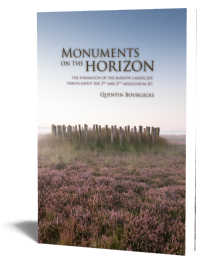Abstract:
The book “Similar but Different. Bell Beakers in Europe” deals with a cultural phenomenon, known as the Bell Beaker culture, that during the 3rd millennium B.C. was present throughout Western and Central Europe. This development played an important role in the formation of the Bronze Age at the turn of the 3rd and the 2nd millennium BC.
This book consists of 10 chapters – in each a specific issue is discussed connected with Bell Beakers. The chapters are divided into three parts concerning consecutively: general problems, issues of the so-called common ware and the character of the Bell Beakers in particular places in Europe. The reader can become acquainted with interpretations of the whole phenomenon, based on inter-regional similarities – the works of H. Case, M. Vander Linden, L. Salanova, and R. Furestier. The second part consist of the chapters by Ch. Strahm, M. Besse and V. Leonini that focus on the matter of the so-called common ware: some ceramic vessels, which are not part of the ‘beaker set’, but accompany it in many regions. That is one of the Bell Beakers’ analytical problems, which is still argued about. The three last chapters show the specific features of some regional centers, where Bell Beakers developed, the attention was focused on the Bell Beakers’ localities’. These are the works of A Gibson (Britain), O. Lemercier (Mediterranean France) and L. Sarti (central Italy).
The book shows the basic features of the Bell Beaker culture in Europe. These however are still a challenge for researchers, because the phenomenon had two faces. On the one hand it is characterized by a set of material culture which is occurring in many places Western and Central Europe. On the other hand, in specific areas, these features were relatively easily influenced by the local environment, they got some sort of regional particularities. That is the essence of the Bell Beakers, hence the title of this book: ‘similar but different’.
This book is a reprint, the first edition was published in 2004 by the Adam Mickiewicz University, Poznań.
Contents
Introduction
Janusz Czebreszuk
Beakers and the Beaker Culture
Humphrey Case
Polythetic networks, coherent people: a new historical hypothesis for the Bell Beaker phenomenon
Marc Vander Linden
The frontiers inside the western Bell Beaker block
Laura Salanova
Bell Beaker lithic industry: a rediscover paradise?
Robin Furestier
Die Glockenbecher-Phänomen aus der Sicht der Komplementär-Keramik
Christian Strahm
Bell Beaker common ware during the third Millennium BC in Europe
Marie Besse
La ceramique domestique du Campaniforme de lItalie Centrale et Septentionale
Valentina Leonini
Burials and Beakers: seeing beneath the veneer in late Neolithic Britain
Alex Gibson
Historical model of setting and spreading out of the Bell Beaker culture in Mediterranean France
Olivier Lemercier
L‘epicampaniforme en Italie Centrale: stratigraphies, datations radiometriques, productions lithiques et ceramiques
Lucia Sarti
Bell Beakers: an outline of present stage of research
Janusz Czebreszuk











